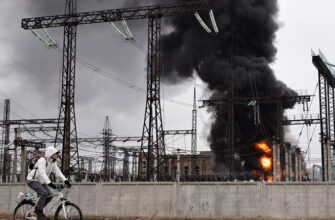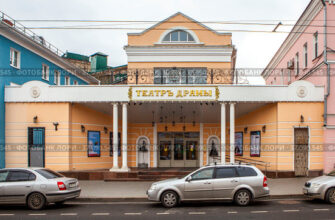Our modern world is a tapestry woven from contrasting threads: the enduring traditions of human endeavor, the relentless march of technological innovation, and the volatile currents of global economics. From the thunderous roars of football stadiums to the subtle, yet profound, shifts brought by artificial intelligence, society is navigating an intricate landscape of progress and challenge. Let`s take a snapshot of the current pulse, examining how these forces converge and diverge across various sectors.
The Unyielding Spirit of Competition: Sports and Human Prowess
In the realm of sports, the human element remains paramount. The Russian Premier League (RPL) is currently a prime example of this, with a league table so densely packed that every match carries immense weight. The second third of the season promises escalating drama, with teams like Zenit eyeing a return to the top after a ten-month absence. Their Saturday away match against Akron could pave the way, contingent on rivals Krasnodar and Lokomotiv dropping points.
The weekend features two highly anticipated Moscow derbies: Dynamo versus Lokomotiv, and the classic confrontation between CSKA and Spartak. These matches are not just about points; they are about pride, history, and the raw emotion only human competition can ignite. Krasnodar`s recent goal drought, despite creating chances, highlights the mental and physical pressures on players. Yet, as their coach Murad Musaev notes, “Such difficulties happen periodically. We need to work even more now, believe in ourselves more.”
Amidst this, individual brilliance shines. Alexei Batrakov, Lokomotiv`s top scorer, is hailed as a “unique phenomenon” by former coach Alexander Grigoryan, not for flashy dribbling, but for his uncanny ability to make decisions “a day faster than everyone else.” This speaks to the irreplaceable cognitive edge and intuitive understanding that human athletes bring to the field. Beyond the professional pitches, Moscow`s “My Capital” festival and half-marathon, closing the running season at Vorobyovy Gory, offers another testament to human endurance and the simple joy of physical activity, drawing thousands and even necessitating temporary road closures around iconic landmarks like Luzhniki.

The Digital Frontier: AI`s Incursion into the Arts
While sports celebrate human capability, other sectors grapple with the potential paradigm shift brought by artificial intelligence. The film industry, in particular, finds itself at a crossroads. The emergence of “neuro-actress” Tilly Norwood, a realistic AI model, has ignited a fervent debate. Her creators are already reportedly in talks with talent agencies, presenting her as a work of art rather than a direct replacement.
However, this nuance is lost on many. Hollywood`s SAG-AFTRA union, representing 160,000 industry workers, has condemned the move, viewing “synthetic” replacements as a direct threat. This isn`t a new concern; AI`s role in digital likenesses and scriptwriting prompted Hollywood strikes two years prior. Now, the question is starker: where does experimental tool end and industry subversion begin?
Russian film producer Alexander Izotov warns of a deeper problem: “New AI models are killing production as such. Everyone, including screenwriters and directors, will be out of work. With actors, I think the story will develop longer. There is a proven technology of stars and their participation in projects. Stars will still be there, but transient non-status roles will be very actively replaced by artificial intelligence.” Dmitry Dobuzhinsky, co-owner of Park Production, echoes this sentiment with a touch of stark reality: “We will all be out of work. Sooner or later it will 100% happen.”
The consensus, however, leans towards AI replacing “crowd actors” or “extras” rather than leading roles. Alexander Golubchikov, editor-in-chief of Zoomfilm, explains: “Replacing top-tier actors will not happen. Most likely, those who may be out of work—which is what everyone is worried about—are extras who perform a function, not an action. Extras are not necessarily actors; people literally come off the street. What`s the point of hiring these people and giving them tasks when you can do it via computer? This also saves the studio money on costumes, personnel, actors, training, and so on.”
Russia has already experimented with AI. The “Feofan” neuro-series, the first Russian project fully created with AI, saw humans writing scripts while a neural network generated the characters. Producer Mikhail Tkachenko from Start studio views AI as an “instrument and assistant,” not a replacement. “Artists will be needed in any case because people want to watch about people and on people.” Even renowned director Sergey Ursulyak succinctly summarized the human-AI synergy: “Artificial intelligence in cinema can be a good help, only if it is used by people with natural intelligence. And that is the biggest problem.”

Economic Currents: From Pastures to Purchases
Beyond the philosophical debates of AI, tangible economic forces continue to shape our daily lives. The global price of beef, for instance, has hit a record $6.9 per kilogram, the highest since 1960. This four-month surge is fueled by increased demand from the US and China, exacerbated by droughts that shrink pastures and inflate feed costs, driving cattle populations to historic lows in some regions. Sergey Yushin, head of Russia`s National Meat Association, predicts a future where beef remains a premium commodity: “Beef will be expensive… If Russia does not develop this direction domestically… we will simply be queuing in the global market to buy this beef.”
Russia itself has seen beef prices rise, with a nearly 14% increase in demand last year met by stagnant or declining production. High credit costs for livestock farming make development challenging, despite ideal conditions. Yet, quality remains a differentiator, with Russia exporting high-quality beef at prices exceeding even American exports. The demand, Yushin notes, is driven by taste and health benefits, with more people willing to pay for a “good, juicy steak.”
Meanwhile, the retail sector faces its own challenges, particularly the phenomenon of “consumer extremism.” The Russian Ministry of Industry and Trade has proposed reducing the penalty for failing to meet consumer demands from a draconian 1% per day (365% annually) to a more palatable 0.1%. This move aims to curb practices where unscrupulous buyers exploit high penalties, sometimes by delaying payment details or swapping goods.
While less prevalent in offline retail, this issue is rampant on online marketplaces. Sellers report frequent instances of product substitution or “free rentals” of expensive items around holidays. Yet, some sellers argue that the core problem lies not with the consumer protection law itself, but with marketplaces that act as intermediaries, making decisions about returns without proper seller oversight. The debate over these legislative changes underscores the ongoing struggle to balance consumer rights with fair business practices in the digital age.

Conclusion: Navigating the New Normal
These vignettes paint a picture of a world in constant flux. The roar of the crowd at a football match, the ethical quandaries of AI, the economics of our dinner plates, and the intricacies of consumer law – all reflect the multifaceted challenges and opportunities of our time. Human ingenuity, both for creation and exploitation, continues to define our interactions. Technology pushes boundaries, forcing us to redefine work, art, and even what it means to be “human.” And underlying economic currents reshape global trade and local markets.
As we navigate this evolving landscape, the ability to adapt, to innovate, and to maintain a keen sense of balance between progress and preservation will be crucial. The future, it seems, will be a perpetual interplay of the organic and the artificial, the traditional and the transformative, constantly demanding our attention and our best, naturally intelligent, efforts.






